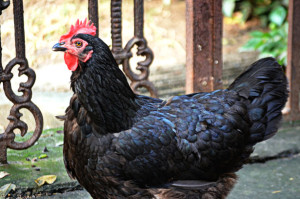 Following on the heels of an H7N2 influenza outbreak in cats (and one person) in New York, H5N6 avian influenza has been found in two dead cats in Pocheon, Gyeonggi province, South Korea. This highly pathogenic avian influenza strain has been active in South Korea since November 2016, resulting in the death or euthanasia
Following on the heels of an H7N2 influenza outbreak in cats (and one person) in New York, H5N6 avian influenza has been found in two dead cats in Pocheon, Gyeonggi province, South Korea. This highly pathogenic avian influenza strain has been active in South Korea since November 2016, resulting in the death or euthanasia
Birds
Mapping Zoonotic Disease Emergence Risk
Predicting the future is a dodgy proposition at the best of times. It’s particularly hard with infectious diseases, which tend not to behave as expected. Yet, it’s important to plan surveillance, education and response. One approach is to assess where certain types of problems are more likely to develop. That can help direct resources (time,…
Animals in Child Care Facilities: New Guidance
Animals are not uncommonly found in daycares and other childcare settings.
- Sometimes, it’s good: animals can be entertaining, animal contact can have various benefits to children, and animals can be part of learning activities.
- Other times, it’s not: such as the presence of species at higher risk for shedding certain pathogens, poor management that increases
…
Zoonoses puzzle #1 answers
Here is the answer key (Click here to download).
Zoonoses crossword
If you’re looking to test your zoonotic disease skills (or to procrastinate….which was basically what I was doing while making this up), here’s a little crossword puzzle. (You can click on the highlighted text for a downloadable version).
The answer key will be posted next week. .
.
More on urban chickens: Part II
 A reasonable question, expanding on the recent discussion about urban chickens and disease risks, is: why don’t we know how often people get sick from urban chickens?
A reasonable question, expanding on the recent discussion about urban chickens and disease risks, is: why don’t we know how often people get sick from urban chickens?
To answer the question, we need to think about how diseases are diagnosed and reported.
Let’s say I decide to raise some chickens in my backyard.…
More on urban chickens: Part I
 Urban chickens continue to be in the news, with debate about instituting (or enforcing) bylaws banning or restricting the raising of chickens in backyards running next to articles on how to raise your own backyard flock.
Urban chickens continue to be in the news, with debate about instituting (or enforcing) bylaws banning or restricting the raising of chickens in backyards running next to articles on how to raise your own backyard flock.
People have various concerns, including:
- Noise
- Attracting wildlife, including predators such as coyotes
- Smell
- Infectious diseases
- Animal welfare
But…
Fall Fair Fowl Factsheet – Biosecurity for poultry at shows
 Poultry biosecurity is an important practice to limit the spread of disease. There are many viruses, bacteria and parasites that exist that can cause disease in birds. These can spread by direct bird contact or indirect contact with humans, housing and equipment. Some of these pathogens can be zoonotic and pose a human health risk.…
Poultry biosecurity is an important practice to limit the spread of disease. There are many viruses, bacteria and parasites that exist that can cause disease in birds. These can spread by direct bird contact or indirect contact with humans, housing and equipment. Some of these pathogens can be zoonotic and pose a human health risk.…
Small flocks, urban chickens and bird flu
Three poultry flocks in Ontario have been found to be infected with H5N2 highly pathogenic avian influenza (HPAI). Under the direction of the Canadian Food Inspection Agency (CFIA), the lead agency when it comes to responding to federally reportable diseases like this, disease control zones have been established around the affected flocks, and movement…
Salmonella and fair poultry exhibits
 As fall fair season starts, concerns about petting zoo outbreaks rise. While deficiencies are still common, petting zoos seem to be getting better with their infection control measures. People too are starting to get better at doing what their asked to do – namely washing their hands after visiting these exhibits. However, as we’ve shown…
As fall fair season starts, concerns about petting zoo outbreaks rise. While deficiencies are still common, petting zoos seem to be getting better with their infection control measures. People too are starting to get better at doing what their asked to do – namely washing their hands after visiting these exhibits. However, as we’ve shown…
